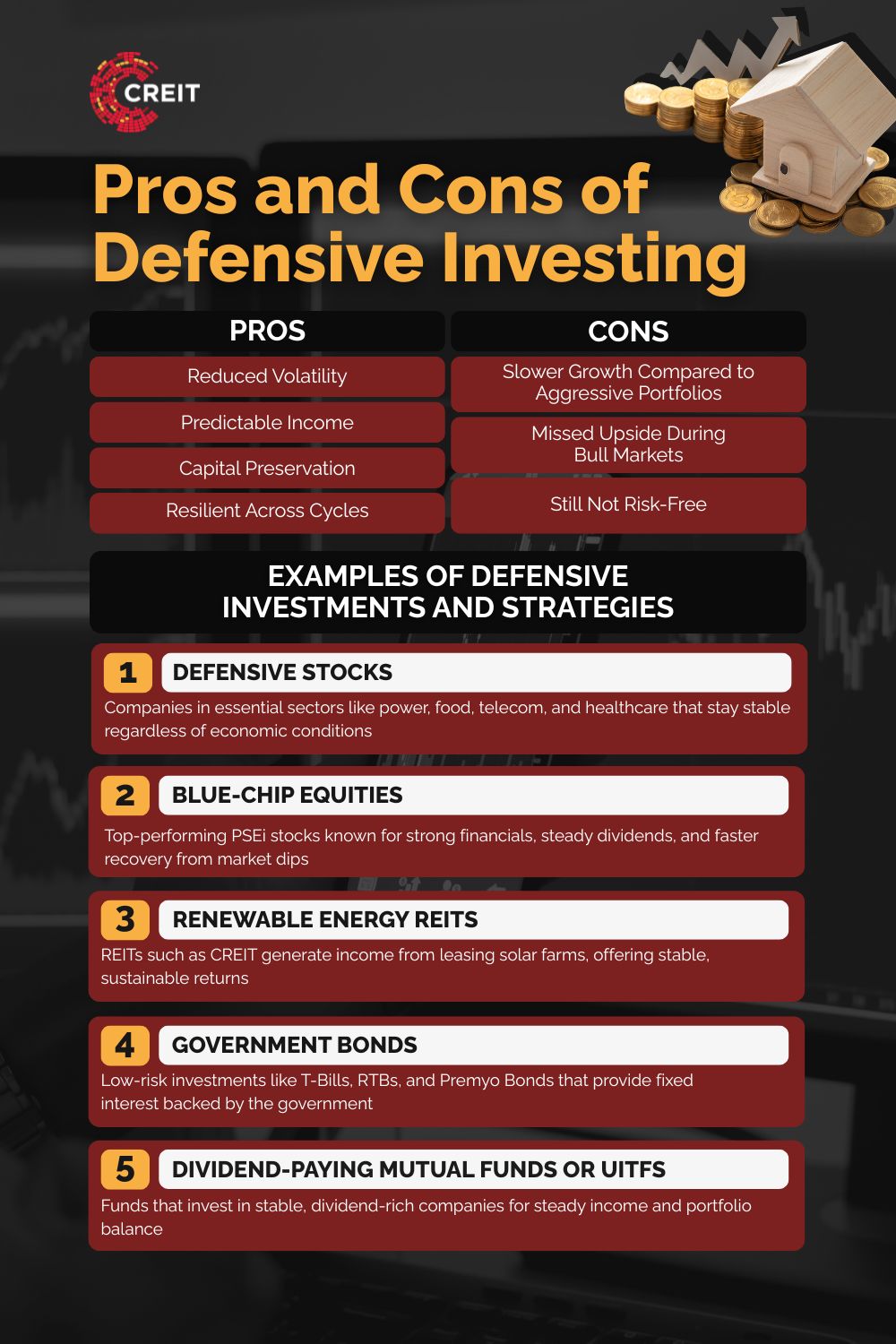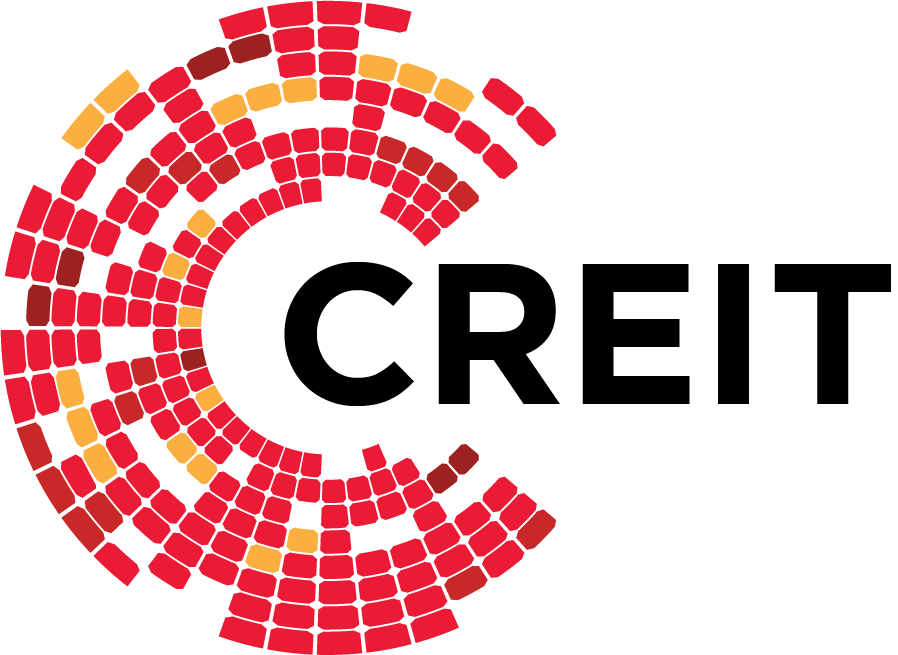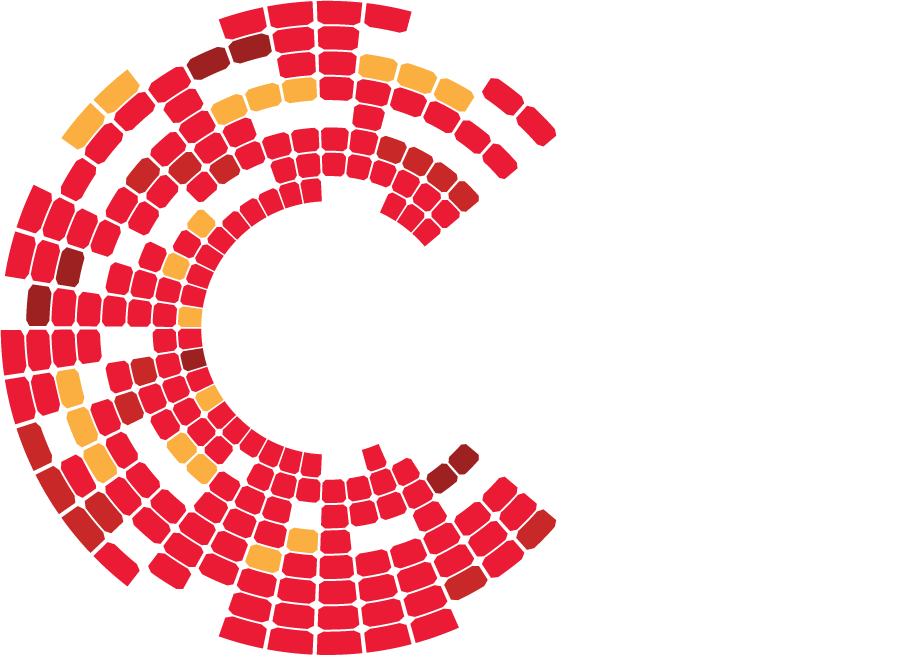When markets get choppy or uncertain, many investors start looking for ways to shield their wealth without exiting the game entirely. This is where a defensive investment strategy becomes a smart, balanced decision. Designed to preserve capital while still offering moderate returns, defensive investing prioritizes stability and resilience, especially during market downturns.
Today, external factors like inflation, elections, and economic shifts can quickly rattle investor confidence. Therefore, having a defensive approach plays a key role between weathering a storm and suffering losses. This guide explains what a defensive investment strategy is, how it compares to conservative investing, and how it will help you build a long-term, sustainable portfolio.
What is a Defensive Investment Strategy?
A defensive investment strategy is a long-term approach to building a portfolio that can perform consistently even during economic downturns. The core idea is to invest in companies and assets that are less affected by business cycles and continue to generate income regardless of market conditions. Examples include businesses that provide essential goods and services, such as like food, electricity, water, and healthcare. These also include investment vehicles like renewable energy REITs, government bonds, and dividend-paying blue-chip stocks.
In the Philippines, defensive investing could mean investing in major utility companies, essential infrastructure, or REITs focused on power generation and distribution. These sectors tend to be crisis-resistant because they support basic needs, ensuring continued demand even when the economy slows down. While returns may be more modest, the emphasis on reliability provides peace of mind, especially for investors approaching major life goals or retirement.
Defensive vs. Conservative Investing: What Sets Them Apart?
It’s easy to confuse defensive investing with conservative investing, especially since both strategies lean toward risk-averse behavior. But there’s a clear difference in how they approach portfolio construction and market participation.
|
Feature |
Defensive Investing |
Conservative Investing |
|
Primary Goal |
Stable performance across market cycles |
Preservation of capital |
|
Asset Preference |
Defensive stocks, REITs, essential services |
Bonds, time deposits, cash equivalents |
|
Risk Profile |
Moderate |
Low |
|
Income Focus |
Dividends and moderate equity growth |
Fixed interest income |
|
Reaction to Market |
Aims to resist volatility |
Avoids exposure entirely |
|
Portfolio Composition |
Still includes equities |
Heavily tilted toward fixed income |
Whereas defensive investors are still active participants in the stock market, they prefer sectors that are able to weather any economic climate. Think of defensive investing as a “shielded offense”: you’re still playing the game, just with a more measured and calculated approach. Meanwhile, conservative investors often aim to preserve capital first, with growth being secondary.
Understanding this distinction matters because the right strategy depends on your goals, time horizon, and risk tolerance. For example, if you're saving for retirement but still want to generate income and beat inflation, a defensive strategy might suit you better than an ultra-conservative one.

Is Defensive Investing Right for You? (Weighing the Pros and Cons)
If you're not quite sure where you stand on the risk spectrum, consider the following questions:
- • Do market crashes make you nervous enough to avoid checking your portfolio?
- • Are you more interested in preserving your wealth than doubling it quickly?
- • Do you prioritize long-term financial goals like retirement or your children’s education?
- • Would you prefer steady dividends over speculative growth?
If you answered “yes” to most of the questions above, then you may lean toward a defensive investing strategy. Such risk offers a practical middle ground where you have the opportunity to grow your money with stability, while avoiding the sleepless nights that often come with more aggressive approaches. To help you further, we’ve listed down the advantages and disadvantages of defensive investing.
Pros of Defensive Investing
- • Reduced Volatility: Defensive investments tend to hold their value better during downturns.
- • Predictable Income: Dividend-paying stocks and REITs offer a regular income stream.
- • Capital Preservation: While not as conservative as bonds or deposits, it still avoids high-risk assets.
- • Resilient Across Cycles: Utilities, consumer goods, and energy perform steadily even in economic slumps.
Cons of Defensive Investing
- • Slower Growth Compared to Aggressive Portfolios: Your returns will be steadier, but not as explosive.
- • Missed Upside During Bull Markets: You may lag behind more aggressive portfolios during market rallies.
- • Still Not Risk-Free: Stocks and REITs can still fluctuate in value, albeit less than volatile sectors.

Examples of Defensive Investments and Strategies
Building a defensive portfolio means focusing on reliability and resilience, not necessarily maximum returns. Here are some common assets included in a defensive strategy:
1. Defensive Stocks
These include companies that operate in industries people depend on no matter the economy—electricity, food, healthcare, and telecoms. Local examples include power utilities, telcos, and essential goods producers.
2. Blue-Chip Equities
Blue-chip stocks from the PSEi index are often included for their strong financials and reliable dividends. While not immune to volatility, they typically recover faster than speculative or small-cap stocks.
3. Renewable Energy REITs
REITs like CREIT offer investors income from leasing out solar farm real estate. These REITs combine physical asset backing with recurring lease income, making them attractive to defensive investors who also value sustainability.
4. Government Bonds
Bonds backed by the Philippine government are a stable choice for defensive investors. Treasury Bills (T-Bills), Retail Treasury Bonds (RTBs), and Premyo Bonds offer low-risk, fixed interest returns.
5. Dividend-Paying Mutual Funds or UITFs
Mutual funds or UITFs with a focus on dividend-rich or stable companies offer another layer of diversification and stability.
Related Article: Building Your Asset Portfolio with the Best Investments in the Philippines in 2025

How to Build a Defensive Investment Portfolio
Defensive investing is about finding the right mix of assets that preserve capital while generating reliable income. Here’s how you can build one in the local context:
1. Start with Income-Producing Assets
Look for investments that consistently pay dividends or interest. REITs like CREIT are ideal for this, offering payouts linked to long-term lease contracts on energy assets.
2. Prioritize Resilient Sectors
Incorporate companies that provide essential services—utilities, telecom, food, or healthcare. These companies tend to remain profitable regardless of market cycles.
3. Allocate a Portion to Bonds and Government Securities
These reduce overall volatility and provide guaranteed returns. The RTB and Premyo Bond programs are accessible and secure for Filipino investors.
4. Diversify with Mutual Funds or UITFs
Choose funds with defensive asset allocations. These are managed by professionals, offering exposure to a mix of bonds, blue-chip stocks, and REITs.
5. Maintain Liquidity
Keep 10–15% of your portfolio in cash equivalents, like time deposits or money market funds, for emergencies or quick opportunities.
6. Monitor and Adjust as Needed
Review your allocations at least once a year to ensure your portfolio still aligns with your goals, especially during times of economic change or personal milestones.
Strengthen Your Investment Strategy with Future-Proof, Crisis-Resilient REITs
Defensive investing is not about playing it safe; it’s about playing it smart. You preserve what you’ve earned while still participating in the growth of stable, essential industries. Few sectors today are more essential, and more resilient, than renewable energy.
One way to boost your portfolio’s resilience while still earning reliable income is to invest in renewable energy-focused REITs. These vehicles combine the strength of essential infrastructure with the growth potential of clean energy assets. As the Philippines’ first renewable energy REIT, Citicore Energy REIT Corp. (CREIT) offers Filipino investors the chance to earn regular dividend income from clean energy assets like solar farms, while investing in a sector that’s not only sustainable, but crisis-resistant.
If you’re a risk-aware investor seeking to secure your future with consistent growth, it’s time to build a defensive portfolio that’s built to last. Explore CREIT’s portfolio and see how your investments can power a greener tomorrow, while delivering real returns today.


